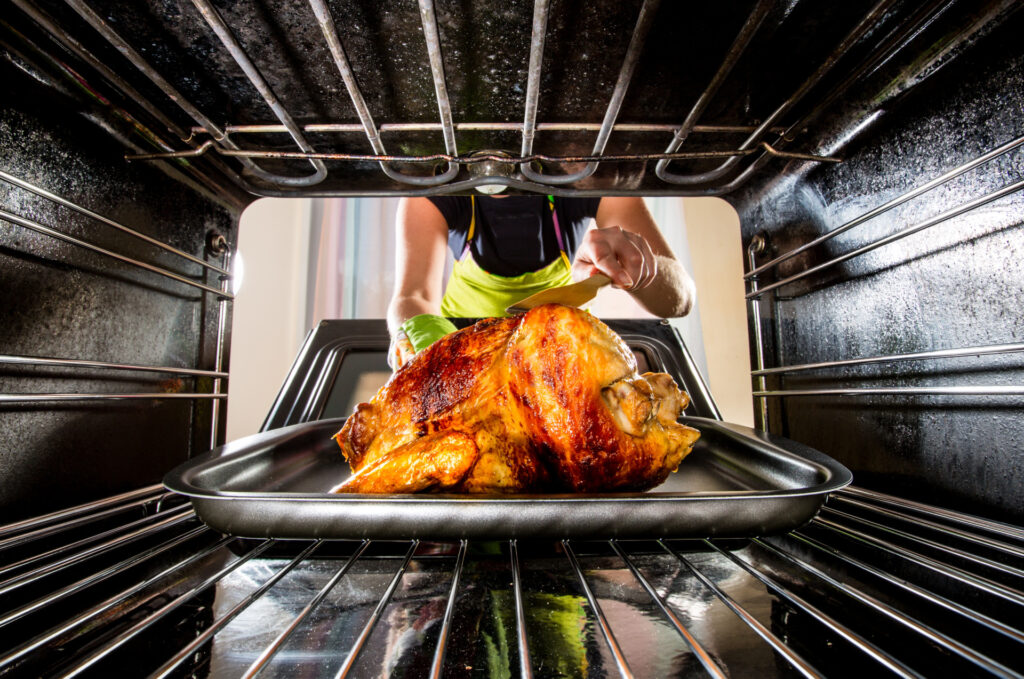Let the thaw begin: How to safely prepare your Thanksgiving turkey
Guidelines for thawing and cooking your turkey, saving leftovers
Whether you have cooked dozens of turkeys or are hosting Thanksgiving dinner for the very first time, dealing with that large naked bird can be intimidating.
If your green bean casserole or dinner rolls are slightly lackluster, friends and family will let that slide. But under- or overcooked turkey will likely be part of everyone’s holiday memory for years to come.

Texas A&M AgriLife Extension Service’s Rebecca Dittmar, program specialist for the agency’s food safety education program, shared some advice and guidelines on how to safely prepare, cook and serve a Thanksgiving turkey.
Be prepared before you start cooking
Before you shop, you should determine not only the size of turkey you’ll need — usually about 1 to 1 ½ pounds per person — as well as whether your refrigerator and oven are big enough to handle the bird. Measure your refrigerator’s shelf space and your oven’s interior and then take a measuring tape to the market. If your appliances are on the smaller side, you can opt to cook two small birds, which will also provide more drumsticks for the leg lovers in your group.
Make sure you have a meat thermometer. If not, buy one before you start cooking. Having one ready will help avoid under- or overcooking the bird and the possible foodborne illness or awkward glares that might accompany those outcomes, respectively.
Be mindful of food safety
You also need to avoid the safety pitfalls associated with this holiday tradition, so practicing food safety is extremely important when it comes to handling that big bird.
Older, younger or immune-compromised family members or guests can be put in serious danger from foodborne illness from a lack of food safety — and that is something for which nobody will ever be thankful.
It’s important to properly cook the meat to the correct temperatures and to be mindful of sanitary food handling throughout the steps, whether preparing, cooking, carving, serving or storing leftovers.
“Approximately one in six people become infected with a foodborne illness each year,” Dittmar said. “These illnesses have flu-like symptoms and can put a damper on the holidays.”
How to thaw a frozen turkey
The slow thawing of frozen foods is preferred as it allows for minimum growth of bacteria, which can cause foodborne illness. Thawing your turkey in the refrigerator is the best way to prevent foodborne illness. To help prevent cross-contamination make sure your turkey is in a dish on the lowest shelf to protect the other food in your refrigerator.
- Refrigerator thawing: The recommended method is to allow 24 hours for each 4-5 pounds of bird weight in a refrigerator 40 degrees or lower. Once refrigerator-thawed, a turkey can be left in the refrigerator for one to two days before cooking.
- Cold-water thawing: Keep the turkey in its original wrapping and allow 30 minutes of defrosting per pound. Change the water every 30 minutes and be careful to avoid cross contamination. Do not let the water splash onto counters, cooking utensils or food. Make sure to thoroughly wash the sink afterward.
- Microwave thawing: Use the defrost function, remove outside wrapping and allow 6 minutes per pound. Cook immediately after thawing.
- Do not wash your turkey prior to cooking.
How to safely cook a turkey
Once the bird is ready for the oven, you need to have the timing right when cooking the bird. Most people go with the tried-and-true oven method of cooking the bird, but deep fryers and other methods can be used. Whichever method you use, the below guidelines hold true.
- Your bird is not safe to eat until it reaches 165 degrees or more.
- Don’t rely on color. You cannot tell if a turkey is done by its color.
- Check three different places: the thickest part of breast, innermost wing and innermost thigh.
- If you cook the bird with stuffing, that stuffing must also reach at least 165 degrees.
- If you go the turducken route, or any other combination of poultry as nesting dolls, they all must reach 165 degrees to be safe for consumption.
How to store leftovers
Although many people sit around a dining table for hours on Thanksgiving, your turkey cannot. Even if guests are still picking at it, keep an eye on the clock and put that bird away before it enters the danger zone. Here are some tips on leftovers:
- Refrigerate turkey within two hours.
- Store leftovers tightly wrapped and in small portions and place in a refrigerator. The key temperature to avoid bacteria growth is 40 degrees and below.
- Leftovers should be used up in three days.
- Frozen leftovers can last two to six months.
Reheating leftovers safely
If you have an excess of leftovers and need some recipe inspiration, visit the Dinner Tonight website.
- Frozen leftovers can be thawed in cold water and then reheated in the oven.
- If you are in a hurry, a saucepan or microwave are quicker options.
- Regardless of how you reheat, your turkey needs to reach at least 165 degrees again.


